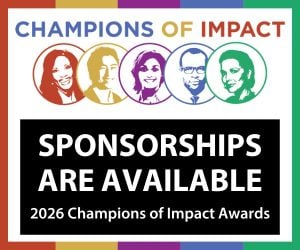The face of colorism, or discrimination based on skin color, has many personalities in today’s age.
It consists of team light skinned and team dark skinned being hash tagged on Twitter. It involves nightclubs hosting group contests of different shades competing for best hair or figure. The discrimination continues at colleges, universities and workplaces across America with the blunt usage of colorist comments.
Where it began
Colorism continues to be a controversial and painful topic among the African-American community. The subject often gets brushed to the side in an effort to cover up a flawed society. Nevertheless this form of racism against oneself and others has a dark history.
Theories suggest that colorism began with internalized racism. Historically, through observation, Blacks saw that people with more European aesthetics and phenotypes were allowed more societal privileges.
Nina G. Jablonski, distinguished professor of anthropology at Pennsylvania State University, and author of The Biological and Social Meaning of Skin Color reports that Carl Linnaeus and Immanuel Kant contributed to classifications of color. She explains the following:
The first scientific classification of humans, published by Carl Linnaeus in 1735, was simple and separated people into four categories based on skin color and continent.
Europeans were white and “cheerful” Asians were brown and “gloomy” Native Americans were red and “irritable” and Africans were Black and “emotionless.”
This analysis was the first authoritative classification that combined physical traits with beliefs about dispositions and character.
The first person to formally define “races” was philosopher Immanuel Kant, who in 1785 classified people into four fixed races, which were placed in a hierarchy according to color and talent.
Despite the strong objections, Kant’s ideas about a fixed natural hierarchy of human races graded in value from light to dark, gained tremendous support because they reinforced popular misconceptions about dark skin being more than a physical trait.
Society approves
Society continues to OK colorism whether it is in a print media, television or social media. Where are the Black people in powerful, leadership roles? Who are the attractive love interests on the TV screen? More often they are light skinned or white individuals.
“Even though we do not control institutions, we do have the ability to influence controlling, negative and indeed dehumanizing acts. These dehumanizing acts actually are damaging to Blacks, as well as whites, and our relationship with one another as human beings,” said Chalmer Elaine associate dean for research and academic affairs and education counselor at Indiana University and Purdue University Indianapolis.
Elaine expressed that Blacks take part in “the dance” of communicating and relating where one force influences the other, then that force influences the other and so on.
Ultimately, it continues on a toxic cycle. It is a fight for human dignity.
“The reason we see the problems of colorism and broadly of internalized racism is that we become socialized at early ages and the socialization is constant, relentless and ubiquitous. We come to accept as normal the kind of messages that actually are assaults on our sense of humanity,” Elaine explained.
The influence
“My mother told me that I was dark and would get even darker if I played in the sun. She told me this as a child, and I held onto it as an adult,” said Marita Golden, author of Don’t Play in the Sun, One Woman’s Journey Through the Color Complex.
In writing the book, Golden gained compassion for the influences on her mother and why she felt that way. She advises parents to talk to their children, before they are victims of a colorist incident, to prepare them for its possibility and build their self-esteem.
“Blacks need to start talking about the issues in their families in a way that can promote healing and forgiveness for the painful legacy inflicted on people of all hues. For example, some light skinned people are marginalized by darker Blacks as not being ‘Black enough,’” Golden said.
Jablonski suggests educating children about the evolution of skin color, the history of race and the dangers of stereotyping may have remarkable and positive results for society.
How to heal
In India it’s said that large segments of the population both men and women lighten their skin as a way of finding acceptance and a viable future. In America, African-Americans remain hostile and alienated because of the legacy of colorism.
“Mentally colorism is an oppression that grows, thrives and sickens society. We become stuck in the quick sand of bad information and even bad thinking,” Elaine added.
Experts say in order to combat racism, people should not judge on looks alone. Rev. Martin Luther King Jr. spoke these words during his “I Have a Dream” speech, “I have a dream that my four little children will one day live in a nation where they will not be judged by the color of their skin, but by the content of their character.”
That speech was given on Aug. 28, 1963. Now fast forward to today…will this form of discrimination ever cease?
How do you feel about colorism? Have you personally experienced it? Share your story with us via Facebook at facebook.com/IndianapolisRecorder.




